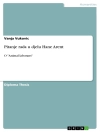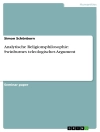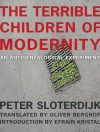After the breakup of the Habsburg Monarchy, the Austrian-American relationship was characterized by a dwarf confronting a giant. America continued to be a heaven for a better life for many Austrian emigrants. For the growing American preponderant position in the world after World War I, the small Austrian Republic was insignificant. And yet there were times when Austria mattered geopolitically. During the post-World War II occupation of Austria, the U.S. helped reconstruct Austria economically and was the biggest champion of its independence. During the Cold War, the U.S. frequently used Austria as a mediator site of summit meetings. American mass production models, consumerism, and popular culture were adopted by Austrian youth. Americanization and American preponderance also produced anti-Americanism. With the end of the Cold War and Austria’s accession to the European Union it once again lost significance for Washington’s geopolitics.
Cuprins
Preface by Thomas A. Schwartz
Introduction
I. Longue Durée, Anschluss and World War II
Two Sides of the Coin: The Americanization of Austria and Austrian Anti-Americanism
Austria’s Loss-America’s Gain: Finis Austriae-The ‘Anschluss’ and the Expulsion/Migration of Jewish Austrians to the U.S.
Lives behind Barbed Wire: Austrian Prisoners of War during and after World War II in American Captivity
II. Cold War
The Marshall Plan and Austria
American Public Opinion about Austria during the Early Years of the Cold War
Cold War Miracle: The Austrian State Treaty at 50
III. Post-Cold War
Of Dwarfs and Giants. From Cold War Mediator to Bad Boy of Europe-Austria and the U.S. in the Transatlantic Arena (1990-2013)
‘Experiencing a Nasty Fall from Grace …’? Austria’s Image in the U.S. after the Formation of the New ÖVP/FPÖ Government
Empire Discourses: The ‘American Empire’ in Decline?
California Dreaming: Arnold the Quintessential American Immigrant
Despre autor
Günter Bischof is the Marshall Plan Professor of History and Director of Center Austria at the University of New Orleans.












